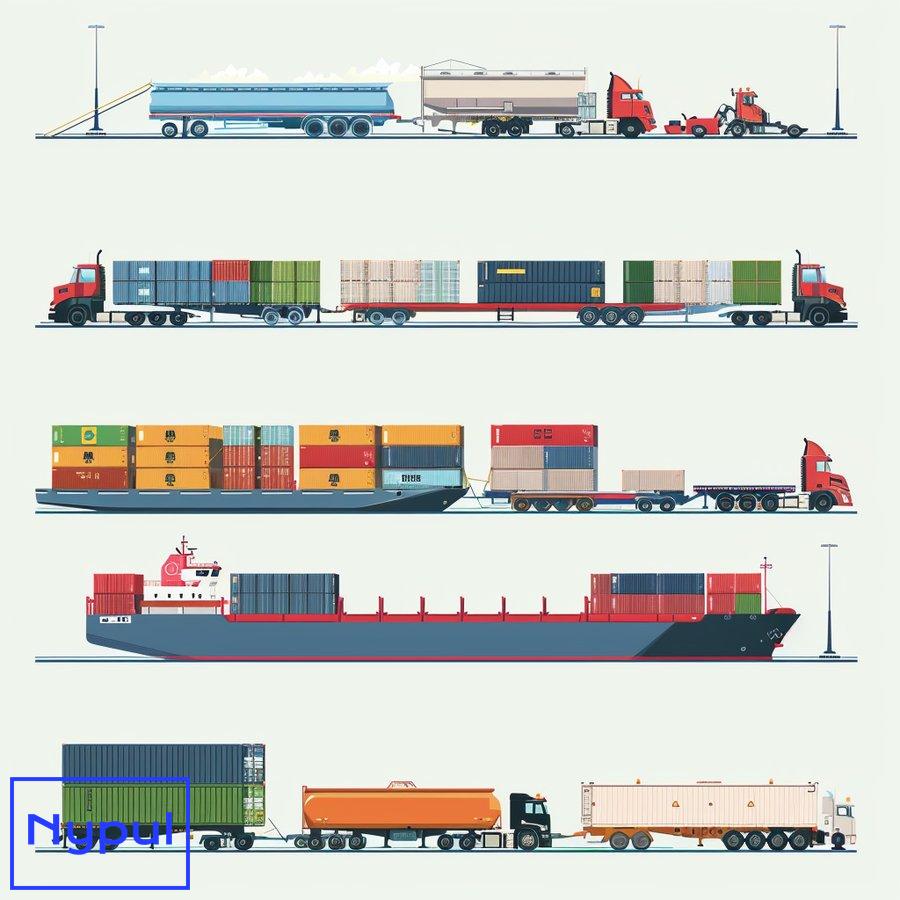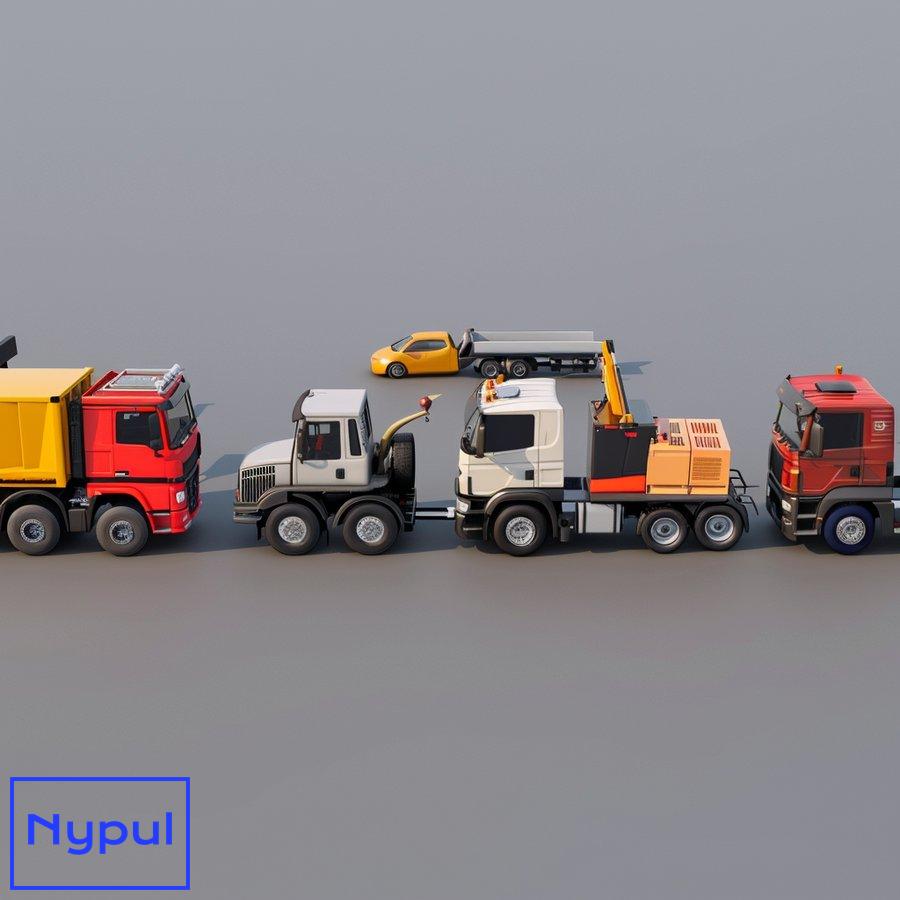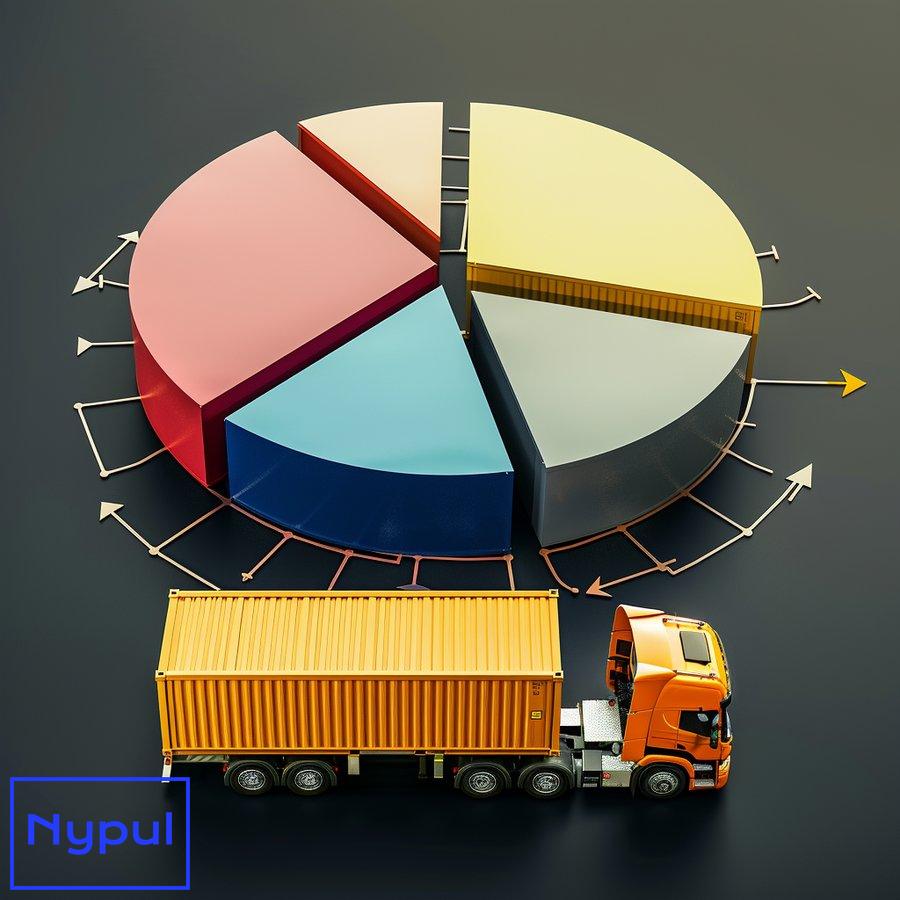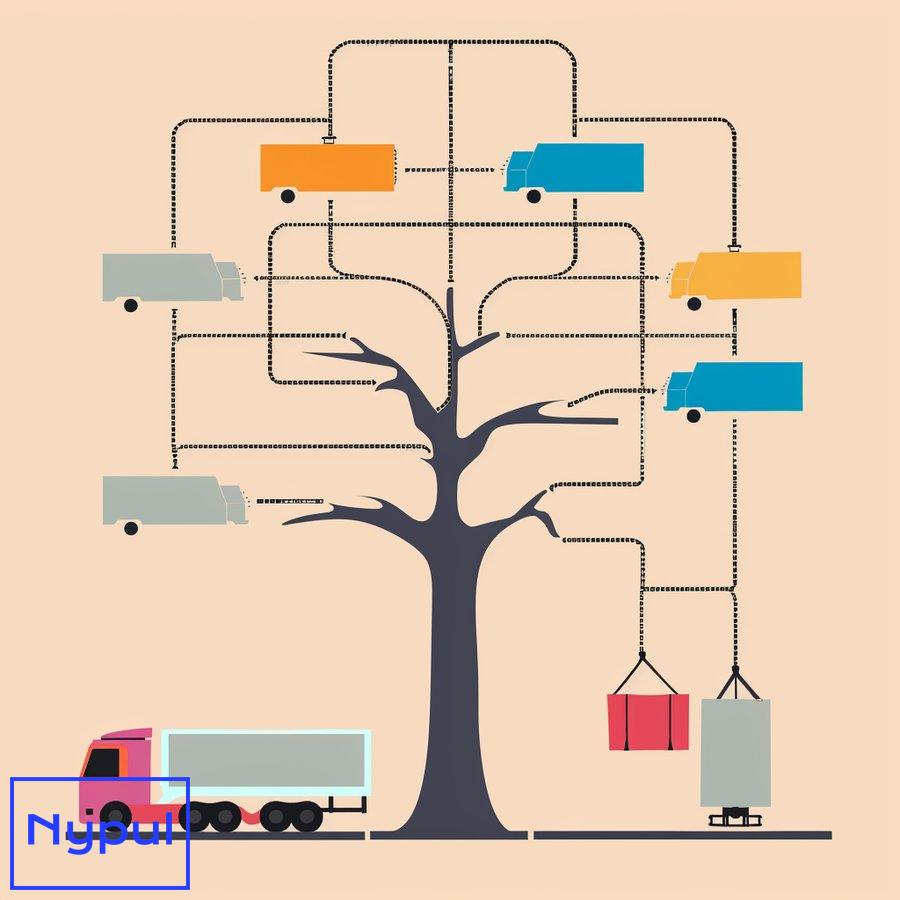What Is a Drayage Delivery
What is Drayage Delivery and Why is it Important?
Drayage delivery is a critical component of the logistics industry that involves transporting goods over short distances, typically from ports or rail terminals to nearby warehouses or distribution centers. Despite covering relatively short distances compared to the overall journey of the cargo, drayage plays a vital role in ensuring the smooth flow of goods through the supply chain.
The importance of drayage delivery lies in its function as a crucial link connecting the different modes of transportation involved in shipping freight. Whether it’s moving containers from a ship to a truck or from a rail yard to a warehouse, drayage services help bridge the gaps and facilitate the efficient transfer of goods.
Without reliable drayage operations, cargo would pile up at ports and rail terminals, leading to congestion, delays, and increased costs for businesses. By swiftly moving goods to their next destination, drayage helps prevent bottlenecks and keeps the supply chain running smoothly.
Moreover, drayage delivery directly impacts the timely availability of goods for businesses and consumers. Any disruptions or inefficiencies in drayage operations can have ripple effects throughout the supply chain, potentially causing stockouts, production delays, and dissatisfied customers.
| Stakeholder | Importance of Drayage Delivery |
|---|---|
| Businesses | Ensures timely availability of raw materials and inventory, prevents production delays and stockouts |
| Consumers | Enables prompt delivery of ordered goods, contributes to customer satisfaction |
| Ports and Rail Terminals | Prevents congestion and keeps cargo moving efficiently through the facility |
| Logistics Providers | Serves as a key service offering and revenue stream, helps maintain smooth overall operations |
In summary, while drayage delivery may seem like a small piece of the logistics puzzle, its importance cannot be overstated. It serves as the vital connective tissue that keeps goods moving seamlessly from one mode of transport to another, enabling businesses to meet customer demands and maintain a competitive edge in today’s fast-paced market.
How Does the Drayage Process Work?
The drayage process involves several key steps to ensure the efficient movement of cargo from ports or rail terminals to nearby destinations. Understanding how this process works is essential for businesses relying on drayage services to keep their supply chains running smoothly.
Cargo Arrival and Pickup
The drayage process begins when a shipment of goods arrives at a port or rail terminal. Once the cargo is unloaded from the ship or train, it is typically stored in a designated area within the facility until it is ready to be picked up by a drayage truck.
Dispatch and Assignment
When the cargo is ready for pickup, the drayage provider is notified, and a dispatcher assigns the job to an available truck and driver. The dispatcher provides the driver with the necessary details, such as the pickup location, cargo information, and delivery destination.
Container Loading
The assigned drayage truck arrives at the port or rail terminal and proceeds to the designated pickup area. The driver then loads the cargo, which is usually in the form of a shipping container, onto the truck using specialized equipment like a chassis or trailer.
Transportation
Once the cargo is securely loaded, the drayage truck transports it to the designated delivery location, such as a nearby warehouse or distribution center. The driver navigates local roads and highways, adhering to traffic regulations and any specific routing instructions provided by the dispatcher.
Delivery and Unloading
Upon arriving at the delivery destination, the driver unloads the cargo using the appropriate equipment. The cargo is then transferred to the receiving facility, where it may undergo further processing or be stored until it is needed.
Documentation and Completion
Throughout the drayage process, various documents are exchanged to ensure proper tracking and record-keeping. This may include bills of lading, delivery receipts, and customs paperwork. Once the cargo is successfully delivered and all necessary documentation is completed, the drayage process is considered finished.
| Step | Key Actions |
|---|---|
| Cargo Arrival and Pickup | Shipment arrives at port/rail terminal, stored until ready for pickup |
| Dispatch and Assignment | Drayage provider notified, job assigned to available truck and driver |
| Container Loading | Drayage truck arrives at pickup location, cargo loaded onto chassis or trailer |
| Transportation | Cargo transported to delivery destination via local roads and highways |
| Delivery and Unloading | Cargo unloaded at receiving facility, transferred for further processing or storage |
| Documentation and Completion | Necessary documents exchanged, process completed upon successful delivery |
By following these steps, drayage providers ensure that cargo moves efficiently from ports and rail terminals to its next destination, keeping the supply chain flowing smoothly.
What Are the Different Types of Drayage Services?

Drayage services come in various forms, each tailored to meet specific transportation needs within the supply chain. Understanding the different types of drayage can help businesses choose the most appropriate service for their cargo and logistics requirements.
Inter-Carrier Drayage
Inter-carrier drayage involves transporting cargo between different carriers within the same metropolitan area. For example, this could include moving a shipping container from a rail terminal to a trucking facility for further transportation.
Intra-Carrier Drayage
Intra-carrier drayage refers to the movement of cargo between two facilities owned by the same carrier. This could involve transporting a container from a carrier’s rail hub to their nearby intermodal terminal.
Pier Drayage
Pier drayage is the transportation of cargo from a rail terminal to a port or pier via truck. This type of drayage is crucial for moving goods that need to be loaded onto ships for international transport.
Shuttle Drayage
Shuttle drayage involves moving cargo to a temporary holding area when the origin hub is overcrowded. This helps alleviate congestion and ensures that cargo can continue moving through the supply chain.
Door-to-Door Drayage
Door-to-door drayage provides direct delivery of cargo from the port or rail terminal to the end customer’s location. This service is often used for retail customers who require containers to be delivered directly to their store or warehouse.
Expedited Drayage
Expedited drayage is a premium service that prioritizes the quick transportation of time-sensitive cargo. This type of drayage often involves dedicated resources and streamlined processes to ensure the fastest possible delivery.
| Drayage Type | Description |
|---|---|
| Inter-Carrier | Transport between different carriers within the same metro area |
| Intra-Carrier | Movement between two facilities owned by the same carrier |
| Pier | Transportation from rail terminal to port or pier via truck |
| Shuttle | Moving cargo to temporary holding area when origin hub is overcrowded |
| Door-to-Door | Direct delivery from port/rail terminal to end customer’s location |
| Expedited | Prioritized, quick transportation for time-sensitive cargo |
By offering a range of drayage services, logistics providers can cater to the diverse needs of their customers and ensure that cargo moves efficiently through the supply chain, regardless of the specific transportation requirements.
What Equipment is Used in Drayage Operations?

Drayage operations rely on specialized equipment to efficiently transport cargo over short distances. The type of equipment used can vary depending on the specific requirements of the cargo and the transportation mode involved.
Drayage Trucks
Drayage trucks, also known as port trucks or intermodal trucks, are the primary vehicles used in drayage operations. These heavy-duty trucks are specifically designed to transport cargo containers safely and efficiently. They come in various configurations to accommodate different container sizes, such as 20-foot, 40-foot, or 53-foot containers.
Chassis
A chassis is a specialized trailer used to transport cargo containers by road. Drayage trucks connect to the chassis, which securely holds the container during transportation. Chassis come in different sizes and configurations to match the container being transported.
Gensets
Gensets, short for generator sets, are portable generators used to power refrigerated containers, also known as reefers. These generators ensure that temperature-sensitive cargo, such as perishable goods, remains at the required temperature during transportation.
Yard Trucks
Yard trucks, also called hostlers or terminal tractors, are specialized vehicles used to move trailers and containers within port or rail terminal yards. These trucks are designed for short-distance, low-speed operations and help optimize the flow of cargo within the facility.
Cranes
Cranes are essential pieces of equipment used in ports and rail terminals to load and unload cargo containers from ships and trains. Drayage operations often involve the use of cranes to transfer containers onto chassis or drayage trucks for further transportation.
Forklifts
Forklifts are versatile machines used in warehouses and distribution centers to move and stack cargo. In the context of drayage, forklifts may be used to load and unload cargo from containers or to move goods within the facility.
| Equipment | Purpose |
|---|---|
| Drayage Trucks | Transport cargo containers safely and efficiently by road |
| Chassis | Specialized trailer that securely holds containers during transportation |
| Gensets | Portable generators used to power refrigerated containers (reefers) |
| Yard Trucks | Move trailers and containers within port or rail terminal yards |
| Cranes | Load and unload cargo containers from ships and trains |
| Forklifts | Move and stack cargo in warehouses and distribution centers |
By utilizing the appropriate equipment, drayage providers can ensure the safe and efficient transportation of cargo, minimizing the risk of damage and delays in the supply chain.
How Do Ports and Terminals Impact Drayage Efficiency?
Ports and terminals play a crucial role in the efficiency of drayage operations, as they serve as the primary hubs for cargo movement. The infrastructure, processes, and management of these facilities can significantly impact the speed and reliability of drayage services.
Port Congestion
Port congestion is a major challenge that can hinder drayage efficiency. When ports experience high volumes of cargo traffic, it can lead to delays in loading and unloading containers, as well as increased wait times for drayage trucks. Congestion can be caused by various factors, such as limited berth space, equipment shortages, or inefficient cargo handling processes.
Terminal Operations
The efficiency of terminal operations directly affects drayage performance. Well-managed terminals with streamlined processes for loading, unloading, and storing containers can significantly reduce turnaround times for drayage trucks. On the other hand, poorly organized terminals with outdated equipment or inadequate staffing can create bottlenecks and delays.
Gate Operations
Gate operations at ports and terminals are critical for the smooth flow of drayage traffic. Efficient gate processes, such as automated check-in systems and pre-arrival notifications, can help reduce wait times for drayage trucks and improve overall throughput. Conversely, manual and time-consuming gate procedures can lead to long queues and delays.
Appointment Systems
Many ports and terminals have implemented appointment systems to manage drayage truck arrivals and departures. By scheduling specific time slots for trucks to pick up or drop off containers, these systems aim to reduce congestion and improve efficiency. However, the effectiveness of appointment systems depends on factors such as system design, carrier compliance, and flexibility to accommodate unexpected changes.
Collaboration and Communication
Effective collaboration and communication between ports, terminals, and drayage providers are essential for optimizing operations. Regular information sharing on cargo status, equipment availability, and potential disruptions can help drayage providers plan their operations more effectively and respond to challenges promptly. Establishing strong partnerships and open lines of communication can foster a more efficient and resilient drayage ecosystem.
| Factor | Impact on Drayage Efficiency |
|---|---|
| Port Congestion | Delays in loading/unloading, increased wait times for trucks |
| Terminal Operations | Streamlined processes reduce turnaround times, poor organization creates bottlenecks |
| Gate Operations | Efficient gate processes improve throughput, manual procedures cause delays |
| Appointment Systems | Manages truck arrivals/departures, effectiveness depends on design and compliance |
| Collaboration and Communication | Information sharing and partnerships optimize operations and resilience |
By addressing these factors and continuously improving their operations, ports and terminals can create a more conducive environment for efficient drayage services, ultimately benefiting the entire supply chain.
What Factors Influence Drayage Costs?
Drayage costs can vary significantly depending on a range of factors that impact the efficiency and complexity of the transportation process. Understanding these factors is crucial for businesses to effectively manage their drayage expenses and make informed decisions when selecting drayage providers.

Distance and Location
The distance between the pickup and delivery points is a primary factor influencing drayage costs. Longer distances generally result in higher transportation costs due to increased fuel consumption and driver hours. Additionally, the specific location of the ports, terminals, or warehouses involved can impact costs, as some areas may have higher operating expenses or congestion levels.
Cargo Type and Handling Requirements
The type of cargo being transported can also affect drayage costs. Hazardous materials, oversized loads, or cargo requiring special handling equipment may incur additional fees due to the need for specialized equipment, trained personnel, and compliance with regulations. Temperature-controlled cargo, such as refrigerated containers, may also have higher costs due to the need for gensets and monitoring.
Equipment Availability and Condition
The availability and condition of equipment, such as chassis and containers, can impact drayage costs. When there is a shortage of equipment or when the available equipment is in poor condition, drayage providers may charge higher rates to cover the costs of sourcing or maintaining the necessary assets. Equipment imbalances between locations can also lead to repositioning costs.
Seasonal and Market Demand
Drayage costs can fluctuate based on seasonal and market demand. During peak shipping seasons, such as the months leading up to the holiday season, drayage providers may increase their rates due to higher demand for their services. Similarly, market conditions, such as changes in trade volumes or shifts in transportation modes, can influence drayage pricing.
Accessorial Charges
Accessorial charges are additional fees that may be applied to drayage services for specific tasks or circumstances. These can include detention charges for delays in loading or unloading, demurrage fees for extended container storage, or wait time charges for driver idle time. The frequency and severity of these accessorial charges can significantly impact overall drayage costs.
Fuel Costs
Fuel costs are a significant component of drayage expenses, as drayage trucks consume substantial amounts of fuel during their operations. Changes in fuel prices can directly impact drayage rates, with providers often including fuel surcharges in their pricing to account for fluctuations. Efforts to improve fuel efficiency, such as using newer trucks or optimizing routes, can help mitigate the impact of fuel costs on drayage expenses.
| Factor | Impact on Drayage Costs |
|---|---|
| Distance and Location | Longer distances and high-cost areas increase expenses |
| Cargo Type and Handling | Specialized requirements and equipment lead to additional fees |
| Equipment Availability and Condition | Shortages and poor condition result in higher rates |
| Seasonal and Market Demand | Peak seasons and market conditions influence pricing |
| Accessorial Charges | Additional fees for specific tasks or circumstances add to costs |
| Fuel Costs | Fluctuations in fuel prices directly impact drayage rates |
By carefully considering these factors and working closely with drayage providers to optimize operations, businesses can better manage their drayage costs and ensure the efficient movement of their cargo through the supply chain.
How is Technology Transforming Drayage Logistics?
Technology is revolutionizing the drayage industry, bringing new levels of efficiency, transparency, and optimization to logistics operations. As the demand for faster, more reliable, and cost-effective drayage services grows, the adoption of advanced technologies is becoming increasingly crucial for drayage providers to remain competitive and meet the evolving needs of their customers.
Automation and Digitization
Automation and digitization are transforming various aspects of drayage operations, from booking and dispatching to documentation and invoicing. Digital platforms and mobile applications are replacing manual, paper-based processes, enabling real-time data exchange and streamlining communication between drayage providers, drivers, and customers. This not only reduces errors and delays but also improves overall operational efficiency and customer service.
Real-Time Visibility and Tracking
Real-time visibility and tracking technologiesare revolutionizing drayage logistics by providing stakeholders with up-to-the-minute information on cargo location and status. GPS tracking systems, IoT sensors, and advanced telematics solutions enable drayage providers to monitor their fleet and cargo in real-time, allowing for proactive management of potential issues and more accurate delivery estimates. This enhanced visibility also benefits customers, who can track their shipments and plan their operations accordingly.
Predictive Analytics and Machine Learning
The integration of predictive analytics and machine learning algorithms is enabling drayage providers to optimize their operations and make data-driven decisions. These technologies can analyze historical data and real-time information to forecast demand, predict potential disruptions, and optimize routing and scheduling. By leveraging these insights, drayage companies can improve resource allocation, reduce empty miles, and enhance overall operational efficiency.
Blockchain Technology
Blockchain technology is emerging as a powerful tool for enhancing transparency, security, and efficiency in drayage logistics. By creating an immutable and decentralized ledger of transactions, blockchain can streamline documentation processes, reduce fraud, and improve trust among stakeholders. Smart contracts built on blockchain platforms can automate various aspects of drayage operations, such as payments and compliance checks, further enhancing efficiency and reducing administrative overhead.
Autonomous Vehicles and Robotics
While still in the early stages of development and adoption, autonomous vehicles and robotics have the potential to transform drayage operations significantly. Self-driving trucks could help address driver shortages and improve safety, while robotic systems in ports and warehouses could enhance the speed and accuracy of cargo handling. As these technologies mature, they are likely to play an increasingly important role in shaping the future of drayage logistics.
Cloud Computing and Software-as-a-Service (SaaS) Solutions
Cloud computing and SaaS solutions are enabling drayage providers to access powerful software tools without the need for significant upfront investments in IT infrastructure. These platforms offer scalable and flexible solutions for various aspects of drayage operations, including transportation management systems (TMS), warehouse management systems (WMS), and customer relationship management (CRM) tools. By leveraging cloud-based solutions, drayage companies can improve their agility, reduce IT costs, and quickly adapt to changing market conditions.
| Technology | Impact on Drayage Logistics |
|---|---|
| Automation and Digitization | Streamlines processes, reduces errors, improves efficiency |
| Real-Time Visibility and Tracking | Enhances proactive management, improves delivery estimates |
| Predictive Analytics and Machine Learning | Optimizes operations, improves resource allocation |
| Blockchain Technology | Enhances transparency, security, and efficiency in transactions |
| Autonomous Vehicles and Robotics | Addresses driver shortages, improves safety and cargo handling |
| Cloud Computing and SaaS Solutions | Provides scalable and flexible tools for operations management |
As these technologies continue to evolve and mature, they are likely to drive further innovation and efficiency gains in the drayage industry. Drayage providers that embrace and effectively implement these technologies will be better positioned to meet the growing demands of their customers and maintain a competitive edge in the rapidly changing logistics landscape.
What Should You Consider When Choosing a Drayage Provider?
Selecting the right drayage provider is crucial for ensuring the efficient and reliable movement of your cargo. When evaluating potential drayage partners, there are several important factors to consider that can significantly impact the quality of service and overall value you receive.

Experience and Expertise
The experience and expertise of a drayage provider are paramount considerations. Look for companies with a proven track record in handling cargo similar to yours and familiarity with the specific ports, terminals, and routes relevant to your supply chain. An experienced provider is more likely to navigate challenges effectively and provide valuable insights to optimize your drayage operations.
Service Coverage and Network
Assess the geographical coverage and network of the drayage provider. A provider with a broad network of terminals, warehouses, and partnerships can offer more flexible and comprehensive solutions. This is particularly important if your business operates across multiple regions or requires intermodal transportation services.
Technology and Innovation
In today’s rapidly evolving logistics landscape, a drayage provider’s technological capabilities can significantly impact service quality and efficiency. Evaluate the provider’s use of advanced technologies such as real-time tracking systems, automated booking platforms, and data analytics tools. A provider that invests in innovation is more likely to offer efficient, transparent, and cost-effective services.
Equipment and Fleet
The quality and availability of equipment are crucial factors in drayage operations. Inquire about the provider’s fleet size, types of vehicles available, and the condition of their equipment. A provider with a diverse and well-maintained fleet is better equipped to handle various cargo types and respond to fluctuations in demand.
Compliance and Safety Records
Ensure that the drayage provider maintains high standards of compliance with industry regulations and safety practices. This includes adherence to hours-of-service regulations, proper licensing and insurance, and a strong safety record. A provider with a commitment to compliance and safety is more likely to deliver reliable and risk-mitigated services.
Customer Service and Communication
Effective communication and responsive customer service are essential for smooth drayage operations. Evaluate the provider’s communication channels, responsiveness to inquiries, and ability to provide timely updates on shipment status. A provider that prioritizes clear and proactive communication can help you manage your supply chain more effectively and address issues promptly.
Pricing Structure and Transparency
While cost is an important consideration, it should not be the sole determining factor. Evaluate the provider’s pricing structure for transparency and comprehensiveness. Look for providers that offer clear breakdowns of their charges, including any potential accessorial fees. A provider with a transparent pricing model can help you budget more accurately and avoid unexpected costs.
Scalability and Flexibility
Consider the drayage provider’s ability to scale their services to meet your changing needs. This includes their capacity to handle volume fluctuations, accommodate special requests, and adapt to changes in your supply chain. A flexible provider can be a valuable partner as your business grows and evolves.
Sustainability Initiatives
With increasing focus on environmental sustainability in logistics, consider the drayage provider’s commitment to reducing their environmental impact. This may include initiatives such as using fuel-efficient vehicles, implementing route optimization to reduce emissions, or participating in green port programs. A provider with strong sustainability practices can help you meet your own environmental goals and potentially provide cost savings through improved efficiency.
| Consideration | Importance |
|---|---|
| Experience and Expertise | Ensures effective handling of cargo and challenges |
| Service Coverage and Network | Offers flexibility and comprehensive solutions |
| Technology and Innovation | Improves efficiency, transparency, and cost-effectiveness |
| Equipment and Fleet | Determines ability to handle various cargo types and demand |
| Compliance and Safety Records | Ensures reliable and risk-mitigated services |
| Customer Service and Communication | Facilitates effective supply chain management |
| Pricing Structure and Transparency | Enables accurate budgeting and cost management |
| Scalability and Flexibility | Supports business growth and changing needs |
| Sustainability Initiatives | Aligns with environmental goals and potential cost savings |
By carefully evaluating these factors, you can select a drayage provider that not only meets your current needs but also serves as a valuable partner in optimizing your supply chain operations for the long term. Remember that the right provider should offer a balance of reliability, efficiency, and value, tailored to your specific business requirements.




